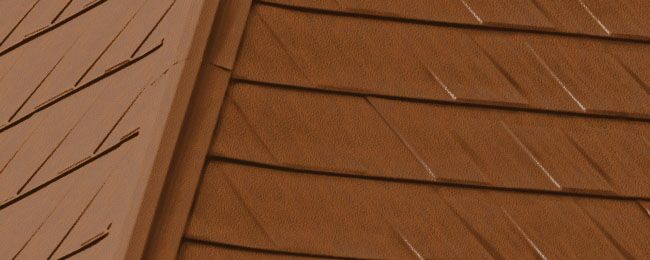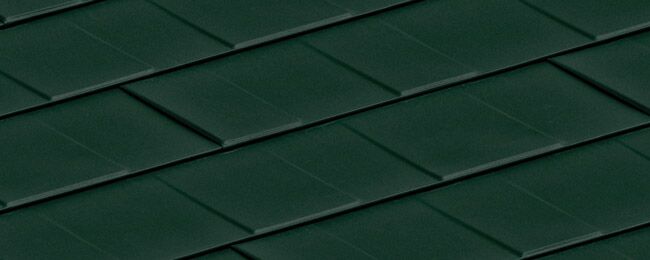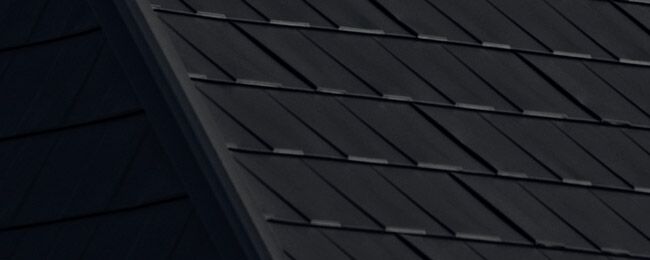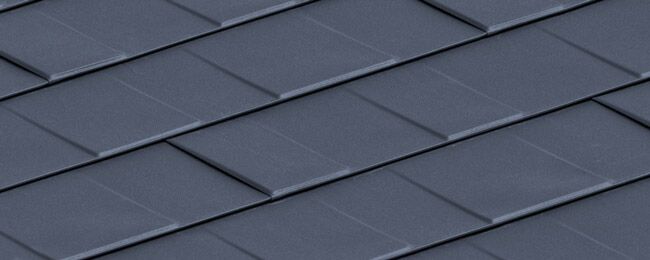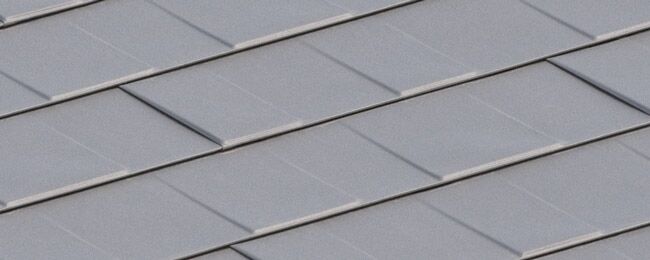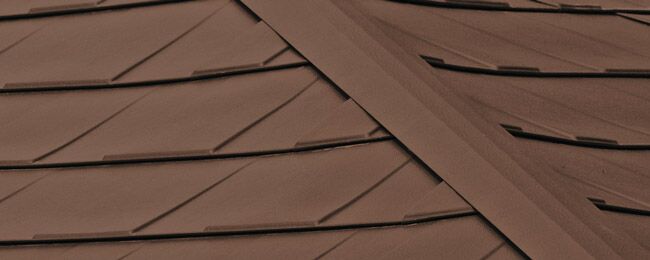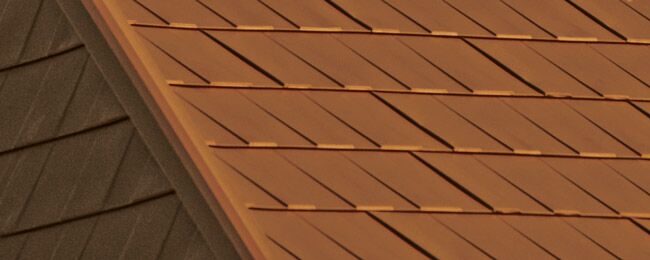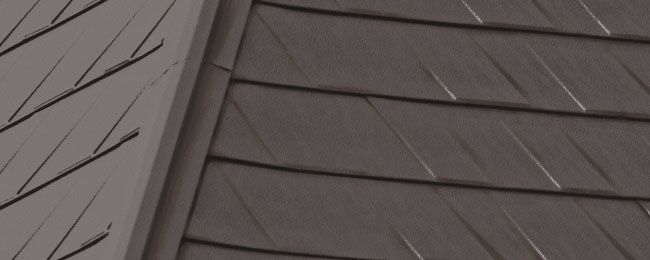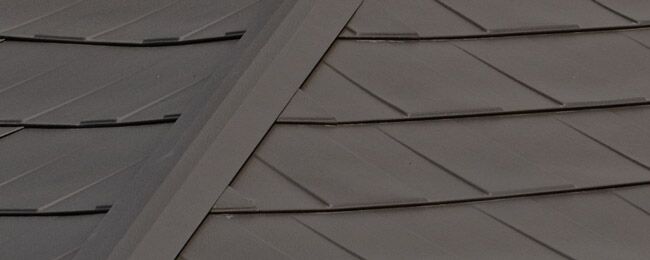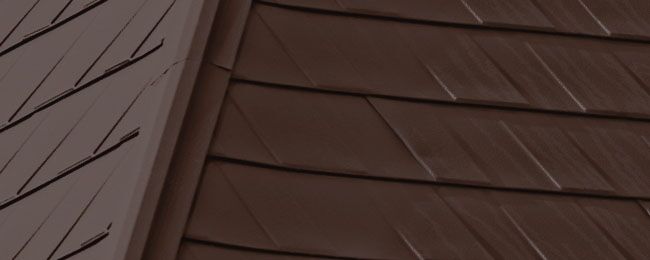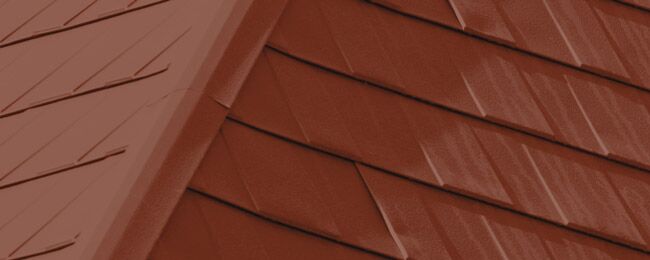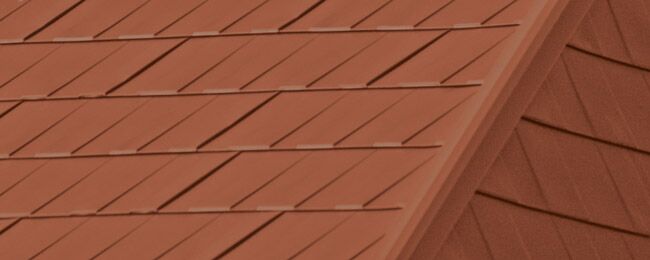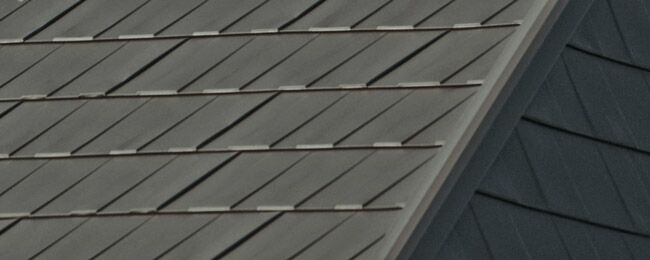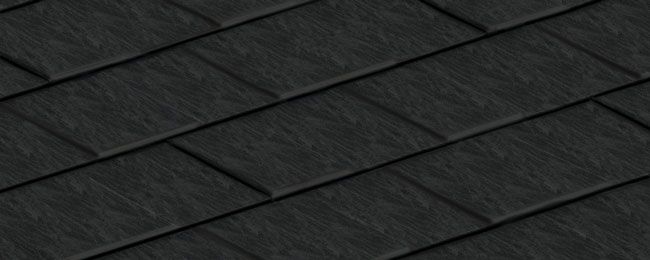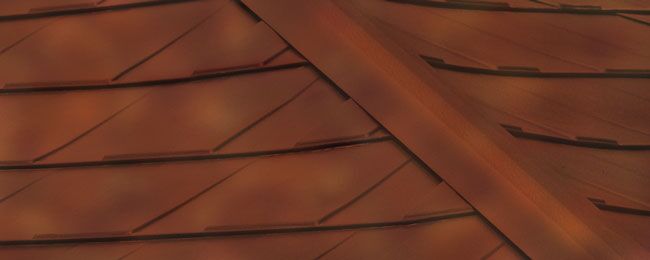
Metal Roofing in Ottawa
Though its initial cost is more than other roofing options, a Wakefield Bridge metal roof provides longevity and energy efficiency that pay off handsomely down the road, all backed up by a 50-year transferable warranty. That adds a lot of value to your home, getting you a better price when you decide to sell. What’s more, Wakefield Bridge steel shingles are made in part of recycled steel and are 100% recyclable, so you’ll never find them clogging landfill sites.
Heritage Junior Standing Seam Metal Roofing
More economically priced, the Heritage Junior H-FTM hidden fasteners steel roof panel offers the same traditional style and appearance of standing seam roofs as the Heritage SeriesTM but in a slightly thinner steel gauge. Available in 13 colours.
METAL SHINGLES
Metal roofing has been around for over a 100 years. It was originally used for commercial, industrial and agricultural buildings, today’s metal roofing also comes in steel shingles in a variety of contemporary attractive colors.
METAL SHINGLES ARE THE PERFECT ROOFING SOLUTION FOR OUR EXTREME NORTHERN WINTERS
These extreme weather conditions and variations in winter temperatures combine with extreme hot summer peaks, blistering sun, sudden high gusts of winds and heavy flash downpours causing flooding and sewer backups and water infiltrations subjecting roofs to water infiltrations and blown-off shingles.
Only the protection of a new steel shingled roof can resist these extreme weather conditions. A quality Wakefield Bridge steel shingle roof is your barrier against all weather-related aggressions. Steel shingles are at least 60 percent lighter and more resistant than asphalt shingles, concrete and clay tiles, cedar shakes and slate roofing materials, and stronger than aluminum shingles.
REVIEWS
I recently hired remember me roofing to replace my roof. I had a fantastic experience from start to finish and can only highly recommend them. They immediately got in touch when I requested a quote and set everything up shortly thereafter. Jordan (the sales rep on my case) came over and was very well prepared with imaging, suggestions, samples and all sorts of information. I originally was thinking about a steel roof, but decided to go with architectural shingles (I live in a middle unit townhome). Jordan gave his honest feedback according to my needs and future plans with the property and I cannot appreciate the honest feedback he provided enough (which seems to become a rarer and rarer quality these days as extra bucks are preferred over long-term relationships). Once the shingle was chosen our dedicated project manager Jesse took over. He did an excellent job managing every aspect from start to finish keeping us posted along the way. Last but not least I must thank John and his crew. They all were excellent from the get-go and did a fantastic job. They were very friendly and professional. They not only did a great job on the roof, but also all other aspects including clean-up and so forth. they finished late in the evening and even took the time to come back during their lunch break the following day to make sure no roofing nails etc. were lying around because by the end there was no daylight left. I can only praise Remember Roofing and will def hire them again should i have roofing needs in the future.
I was very impressed. I will be telling my landlord all about Remember me Roofing!
Thank you
Our neighbor recently had their roof done by Remember Me Roofing Company, and one of their crew members, Ben (Benoit), noticed some loose shingles on our roof. He kindly took the initiative to fix them for us at no charge. We were very pleased and impressed by Ben’s thoughtful gesture and offered him a small payment for his help, which he graciously declined. It’s rare to see such hardworking, honest, and helpful workers these days. Well done, Ben! Keep up the great work! Helene and Des
First off, Jordan is an incredible professional to work with -- showed up when he said he would, timely quote, just a pleasure to work with. He made the initial set up process as easy as possible.
Then Jesse, our project manager, has just been a gem. Excellent communication, immediate responses, follow up on issues that arose. Our slanted driveway got scratched up when materials got delivered -- the immediate response was "yup, we're on it, we'll have a company out to fix and re-seal within the week". Wow.
The actual work, again, extremely professional. Our rather large roof was done in a single day by a crew of 5 guys, who came in and out with not a nail in sight -- we have dogs so nails are always an issue. Everything was cleaned up and done in 24 hours -- incredible!
Everyone was pleasant to deal with. Team of guys that came were knowledgeable and skilled. Site was cleaned up after completion. Very happy with our roof.
Rusty was incredibly helpful in providing fair and transparent quotes, answering all my questions, and getting the work scheduled as quickly as possible. I truly appreciated his professionalism and prompt communication.
Ben, who came to do the actual roof replacement, did a wonderful job. He was very polite, hardworking, and meticulous, taking his time to ensure everything was done perfectly. The quality of his workmanship really shows, and the finished result looks fantastic.
Thank you, Remember Me Roofing, Rusty, and Ben, for your excellent service! I would highly recommend this company to anyone looking for a reliable and professional roofing contractor.
As i am from Scotland and worked for a Foundation Construction House Builder as a draftsperson for 7 years i know a thing or to about roofs. The team that Jesse the coordinator for the company has working for him are such nice guys. Polite to the customers, will go over and above to make sure there work is up to the best standard they can. What workers would work from 7 am to 8.30 pm. to make sure that it is done well. These guy's do. not have to go to this time as the company is a 7 to 5 schedule.
But with Jesse and the guy's working together it's not boss and crew but family. I have no hesitation in recommending them to any one that has to get there roof replaced.
Aileen Downie Kanata.
Maya Anderson
I highly recommend Remember Me Roofing.
We just had our eavestrough replaced by them and again we are very happy with the job.
They started the jog as scheduled , were very efficient and the job site was always neat and organized.
Collin and the crew were very accommodating
I would not hesitate to recommend this company to anyone.
Ray
The workmanship and professional teamwork atmosphere was remarkable. The completed work stood the test of torrential downpours, hail and high winds shortly after completion! I highly recommend Remember Me Roofing for their services which truly reflect a "people-first culture" (as per their website).
Special thanks to Chris D our sales rep, Jesse our service manager, Sebastian, Dennis and Scott who all worked very hard in scorching hot conditions to ensure we got a top notch roof that looks great.
Ottawa needs more contractors and companies like Remember Me Roofing. Would definitely recommend for your roofing needs.
Pierre L.

